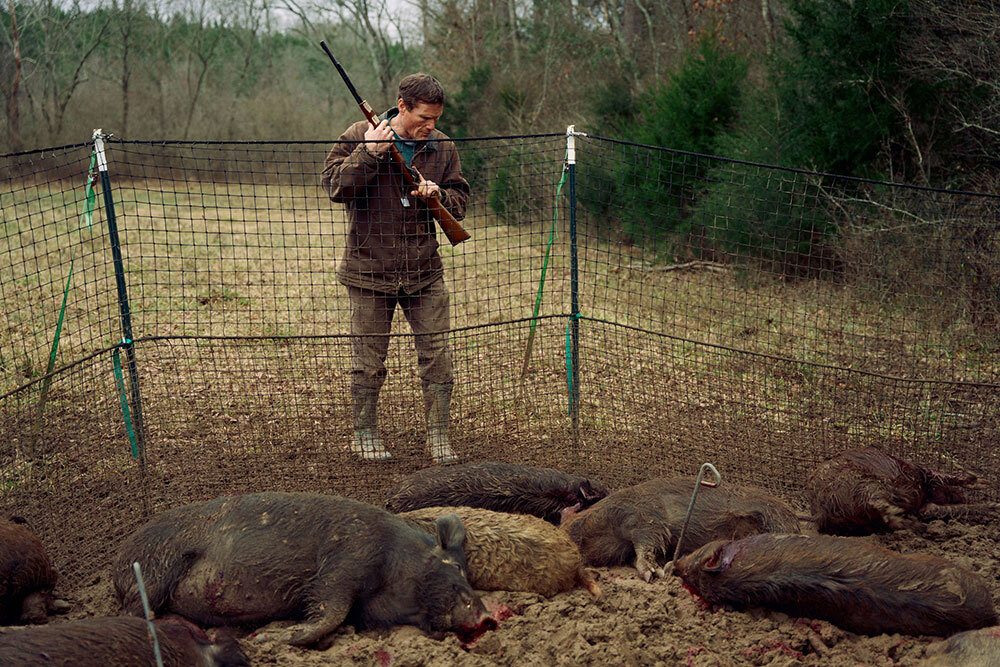
I really do not know on this one. Our problem is that wild animal husbandry is still terribly tentative in our world.
We really cannot tolerate a climax preditor like a grizzly harvesting them in the fall. Black bears are no better and most other preditors are scant on the ground as they must survive the winter.
The solution will take a capture program that sees the animals cleaned up and fattened for slaughter. With a fixed price, a local farmer can set a sooner trap with a remote control. suddenly it is worth his effort to capture local sooners every year. This should solve it..
.
CAN WE STOP FERAL PIGS BEFORE THEY WRECK EVERYTHING?
 Thursday, April 1, 2021
Thursday, April 1, 2021PHOTOGRAPH BY GEORGE SHIRAS, NAT GEO IMAGE COLLECTION
By Rachael Bale, ANIMALS Executive Editor
There’s a video clip saved to my husband’s phone that’s become a meme in our household. He recorded it while we were on a boat tour just outside New Orleans, motoring around the swamp hoping to see alligators. The gators weren’t showing themselves, but we quickly came across a group of feral pigs snuffling around the mud at the base of some cypresses dripping in Spanish moss. One pig immediately jumped in the water and began paddling toward us. “YER BEAUTIFUL!” the tour guide shouted at him when he got to the bow of the boat. It’s the perfect three-second clip.
“Yer beautiful!” We shout it at our dog when he snorts and snuffles like a pig (which is a lot). “Yer beautiful!” we shout at each other when one of us does something embarrassing.
While that video will never not make me laugh, in the years since that trip, feral pigs have become less funny to me. I learned that many scientists consider them to be the most destructive invasive species in the world. Genetically they’re a mix of domestic pigs and wild Eurasian boars, and nature in North America isn’t equipped to handle them. Millions have spread across the southern and western U.S. They cause billions of dollars in damage to farms and crops each year. They eat endangered salamanders and the eggs of threatened sea turtles. They outcompete deer and wild turkeys for habitat, and they destroy fragile ecosystems like oak forests and river estuaries with their rooting, wallowing, and fecal bacteria. When they move into a new area, it can lose up to 25 percent of its vertebrate biodiversity. (Above, two feral hogs in Florida in 1913; below, ecologist Anthony DeNicola, an inventor of a new type of trap that helps ensure the pigs can be humanely shot.)
PHOTOGRAPH BY SULLY SULLIVAN
Decades of warlike resistance—virtually unhindered recreational hog hunting using everything from helicopter assaults to machine guns—have only made things worse, Stephen Robert Miller reports for Nat Geo. So what will it take? And is it possible to eradicate this highly intelligent, socially complex species in a humane way? Read Miller’s story here.

No comments:
Post a Comment